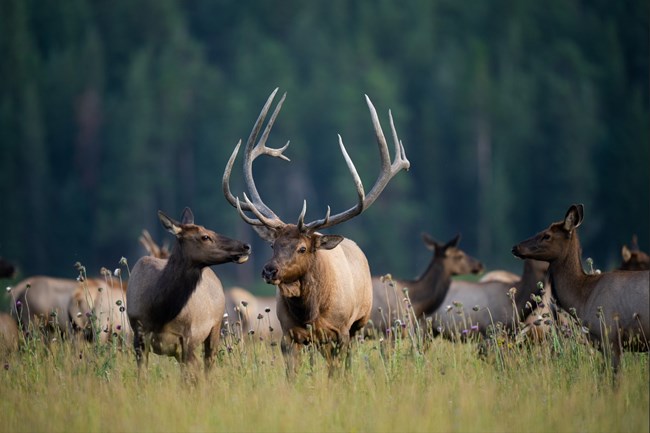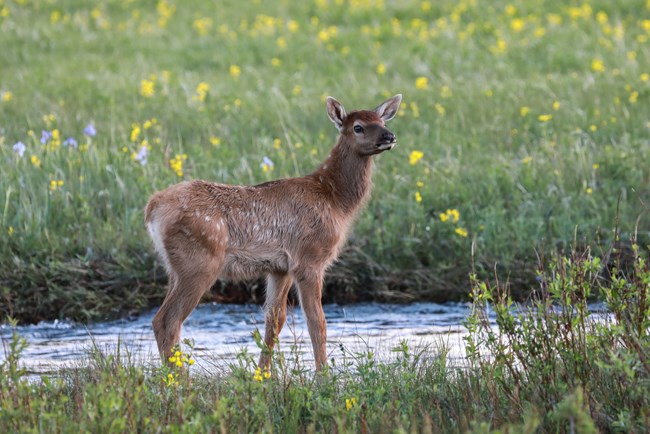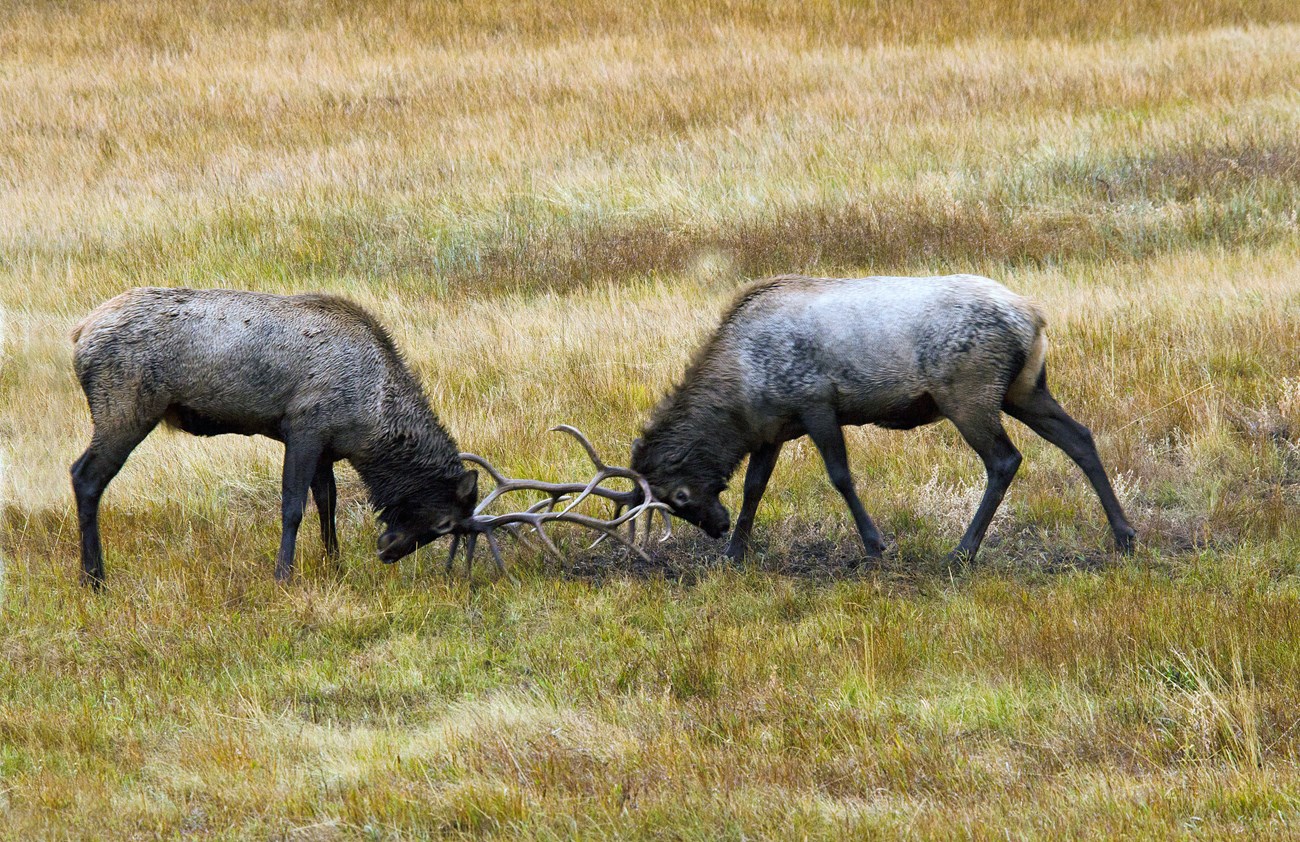|
Visit our keyboard shortcuts docs for details
View bull elk bugle during the fall rut. North American Elk (Cervus canadensis)Elk are one of the largest members of the deer family. Large males, called bulls, can weigh several hundred pounds and stand five feet at the shoulder. Females are called cows and are roughly half that size. A dark brown mane, light-brown bodies and white rumps characterize both sexes. They grow a thicker coat of hair each winter which they shed each spring. Only males have antlers, which grow in the spring and drop each winter. Antlers can grow up to an inch a day. They are covered with a protective layer of velvety skin. When the antlers are fully grown, the bulls scrape this layer off. 
NPS Life History - OverviewElk are highly social animals and travel in various herd sizes throughout the year. Herds can grow as large as a few hundred individuals. Elk have a large range and move according to seasonal food availability. In the summer, herds move to higher elevations to feed on tundra vegetation, while in the winter they move down to lower elevations of the park and down into the Front Range. 
NPS/Baker Life History - Elk Calves
Elk primarily graze on grasses and forbs but they also browse shrubs. They feed mostly in the morning and evening, and seek sheltered areas during the middle of the day to digest. They eat an average of 20 pounds of vegetation daily. 
NPS Elk Rut - Mating SeasonEvery autumn, elk descend from the high country to montane meadows for the annual breeding season. Within the gathering herds, the larger antlered males, now weighing up to 1,100 pounds move nervously among the bands of smaller females. In this season of excitement, bull elk compete with one another for the right to breed with a herd of females. Prime bulls, eight to nine years old, stand the best chance of mating. While competition is high among bulls, it includes little fighting, since fighting causes injury and depletes energy. Instead, mature bulls compete for cows by displaying their antlers, necks and bodies. They emit strong, musky odors and bugle. With little rest or food during the mating season, bulls enter the winter highly susceptible to the hardships of the coming months. Call of the Wild - The Elk BugleBull elk signal the beginning mating season with a crescendo of deep, resonant tones that rise rapidly to a high-pitched squeal before dropping to a series of grunts. The elk bugle gave rise to the term "rut" for the elk mating season.
The eerie call echoes through the autumn nights and serves to intimidate rival males. Mating season is a stressful time for the animal, and the bugle may also act as a physical release of tension. Want to hear an elk bugle? Click on the sound file below to listen:
History of Elk in Rocky Mountain National ParkNorth American elk, or wapiti, were once plentifulin the Rocky Mountain National Park area. As Euro-Americans settled the Estes Valley, they hunted elk intensively, sending much of the meat to market in Denver. By 1890 few, if any, elk remained. In 1913 and 1914, before the national park's establishment, the Estes Valley Improvement Association and United States Forest Service transplanted 49 elk from Yellowstone National Park to this area. Around the same time, an all-out effort began to eliminate predators—including the gray wolf and the grizzly bear. The resulting decrease in predators and hands-off management of elk hastened the recovery of Rocky's elk population. The population grew to record high numbers in the late 1990's causing deterioration of vegetation and other wildlife communities. The current Elk and Vegetation Management Plan addresses these issues. The plan's goal is to maintain a more natural population of 600-800 elk in the park's low-elevation valleys during the winter. Learn more about the Elk and Vegetation Management Plan. |
Last updated: September 11, 2024
